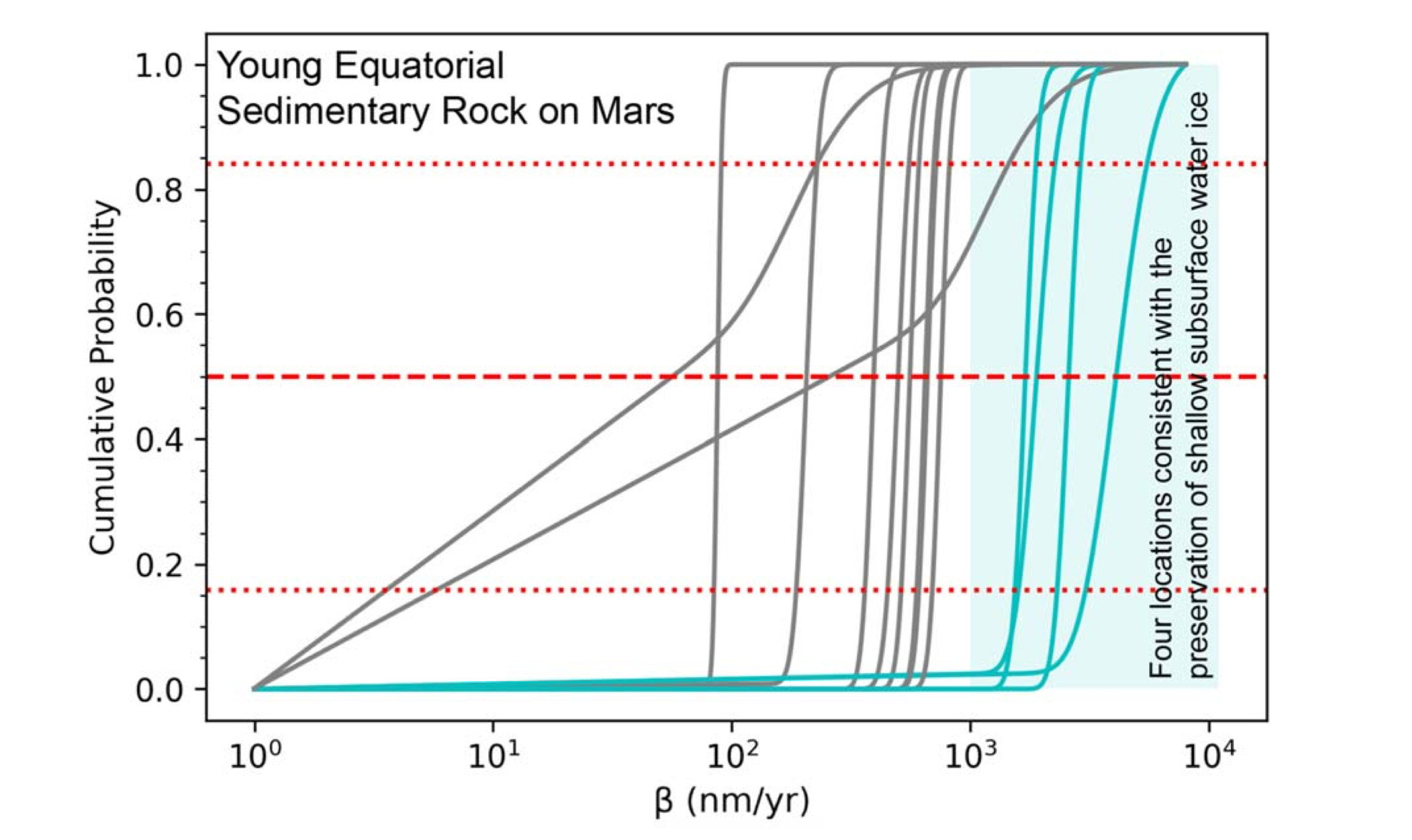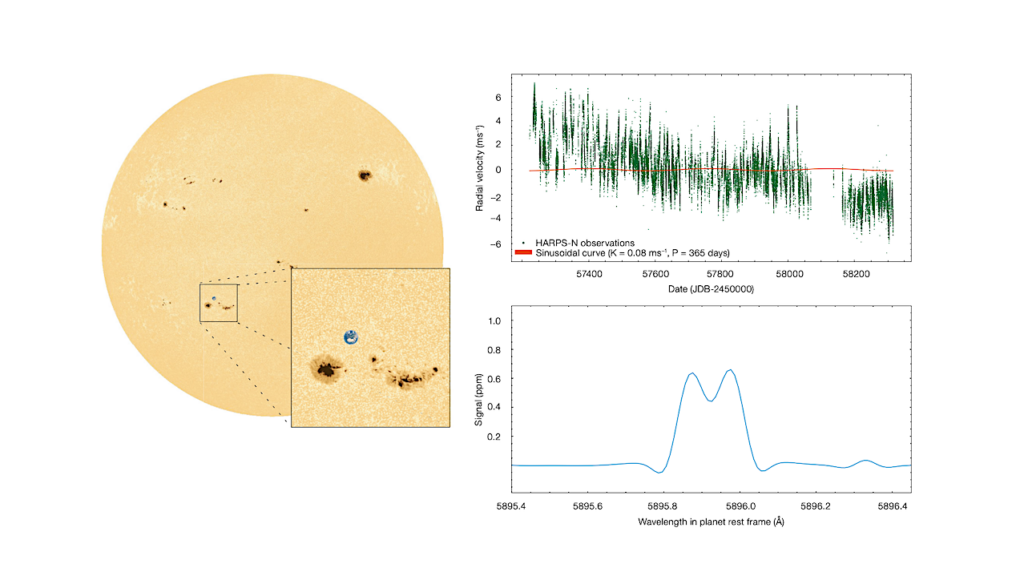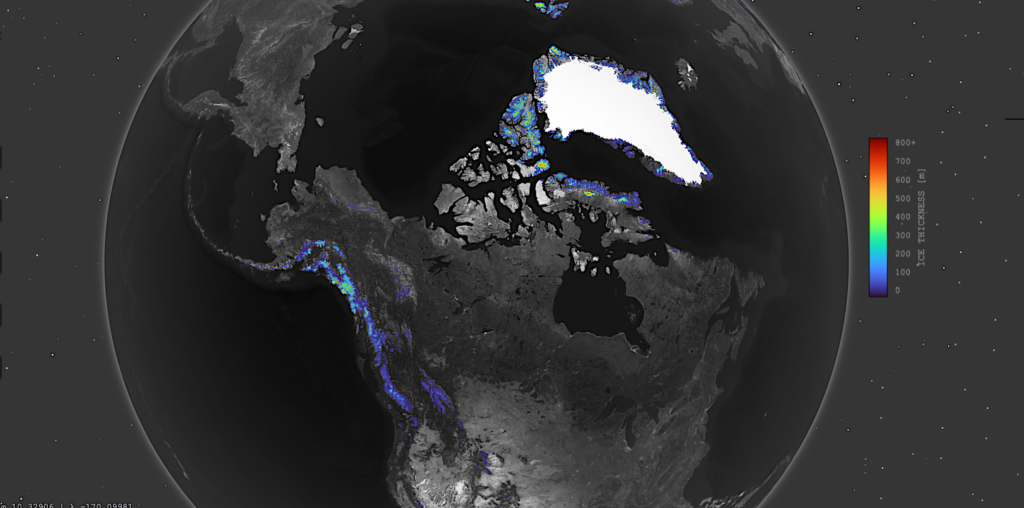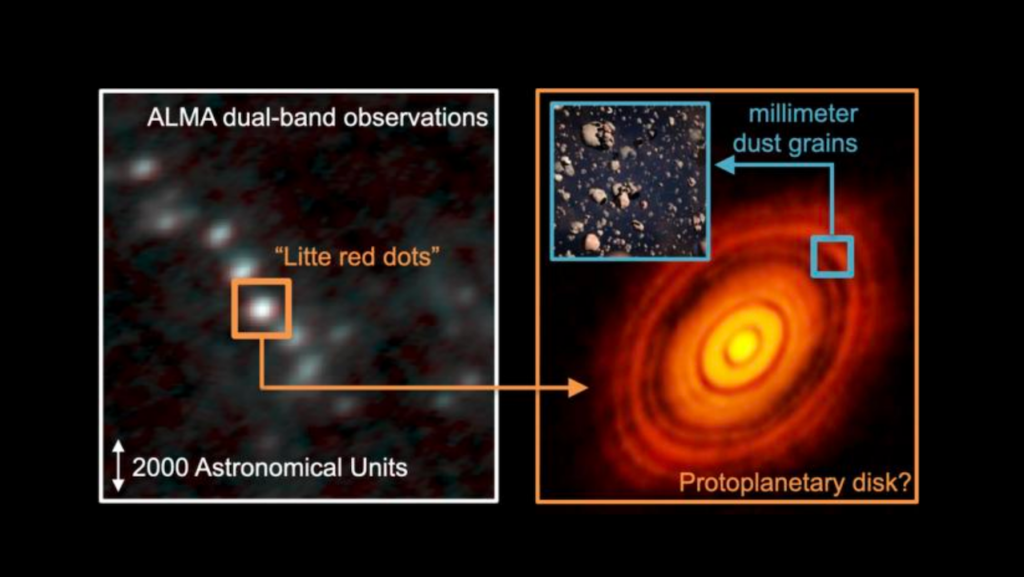The Age and Erosion Rate of Young Sedimentary Rock on Mars

The Medusae Fossae Formation (MFF) is an enigmatic sedimentary unit near the equator of Mars, with an uncertain formation process and absolute age.
Due to the heavily wind-eroded surface, it is difficult to determine the absolute model age of the MFF using a one-parameter model based on the crater size-frequency distribution function with existing crater count data.
We create a new two-parameter model that estimates both age and a constant erosion rate (β) by treating cratering as a random Poisson process. Our study uses new crater count data collected from Context Camera imagery for both the MFF and other young equatorial sedimentary rock. Based on our new model, the Central MFF formed >1.5 Gyr ago and had low erosion rates (<650 nm yr−1), whereas the East MFF, Far East MFF, and Zephyria Planum most likely formed <1.5 Gyr ago and had higher erosion rates (>740 nm −1). The top of Aeolis Mons (informally known as Mount Sharp) in Gale Crater and Eastern Candor have relatively young ages and low erosion rates.
Based on the estimated erosion rates (since fast erosion permits metastable shallow ice), we also identify several sites, including Zephyria Planum, as plausible locations for shallow subsurface equatorial water ice that is detectable by gamma-ray spectroscopy or neutron spectroscopy. In addition to confirming <1.5 Gyr sedimentary rock formations on Mars, and distinguishing older and younger MFF sites, we find that fast-eroding locations have younger ages and MFF locations with slower erosion have older best-fit ages.
An Y. Li, Edwin S. Kite, Katarina Keating
Comments: 17 pages, 12 figures
Subjects: Earth and Planetary Astrophysics (astro-ph.EP); Geophysics (physics.geo-ph)
Cite as: arXiv:2211.00236 [astro-ph.EP] (or arXiv:2211.00236v1 [astro-ph.EP] for this version)
https://doi.org/10.48550/arXiv.2211.00236
Focus to learn more
Journal reference: Planetary Science Journal 3 246 (2022)
Related DOI:
https://doi.org/10.3847/PSJ/ac9121
Focus to learn more
Submission history
From: An Li
[v1] Tue, 1 Nov 2022 03:01:02 UTC (2,646 KB)
https://arxiv.org/abs/2211.00236
Astrobiology








